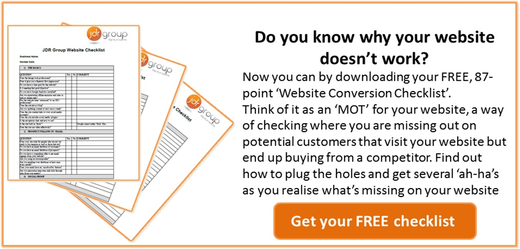6 'Social Proof' Strategies To Increase Website Conversion Rates

Not that long ago marketers, entrepreneurs, artists and PR professionals relied on a few things to gain authority and influence. They needed to know the right people, get awards or accreditation and get press publicity.
Now there are a number of simple, clever digital marketing techniques that have more impact on your business reputation than ever before. They are called “social proof strategies”. By optimising social proof strategies, you can start attracting more conversions and revenue from your website instantly – while cutting out the middleman.
What is Social Proof?
As much as we don’t like to admit it, people naturally have a sheep mentality. We feel more comfortable being ‘normal’ and relying on others’ opinions. Social proof is a psychological theory where a person “looks to the actions of others as assurance (or proof) that the decision they intend to make is the correct one”.
Example: Robert Cialdini, author of Influence: The Psychology of Persuasion, did an experiment where one person looked up to the sky in a public place – to no obvious effect. But when more people started looking at the sky, many others did the same.
Lesson: In new situations, we look to others for confirmation on what is credible or how to act.
This basic principle can be seen in all kinds of social situations; especially on the Internet. Websites, blogs and Social Media websites let you subscribe, like, tweet and follow whoever, wherever and whenever you want. What better place to use social proof strategies?
Implementing Social Proof Online
Here are the best tried-and-tested social proof strategies and how to implement them. These have proven to be very effective marketing tools to get more conversions from your website.
Proof with numbers
This is probably the most powerful of the social proof strategies. It includes monitoring numbers of the following, then displaying them clearly on your website:
- Likes
- Tweets
- Followers
- Subscribers
- Purchases
- Downloads
- Views
- Shares
For example, blogs use RSS feed data to count the number of readers or subscribers, then display this on the website. Large numbers suggest that a lot of people found it a good quality, credible and entertaining blog, encouraging more visitors to read and subscribe! The same applies for getting people to buy, interact through your Social Media pages or complete any recordable action.
Proof with comments
A massive 84% of Generation Y say that user generated content influences their decision to buy. This fact alone means that adding comment sections, forums and feedback forms to your website is likely to be good news for conversion rates. By encouraging positive customer interaction on your website, you make your business seem honest, approachable and popular.
Of course in this case you have to prepare for negativity, so ensure you have boundaries in place and a well-regulated website.
Proof with reviews
This refers to customers who interact with your website purely to give opinions on your products and services. Publishing reviews/testimonials on your website - with the name of the person and business – act like mini sales pitches. If these are singing your praises, it’s no surprise that leads will be convinced to click and buy.
Aside from website reviews you should also prepare for customers to post on other review websites, so make sure your business operations are monitored and improved to avoid bad online publicity.
Reviews are effecting online marketing in a big way. 70% of customers say they trust online opinions, and it works for local businesses too. 52% said that positive online reviews made them more likely to use a local business.
Proof with logos
This is one social proof strategy that doesn’t require direct interaction from your customers. Clearly display logos from any of these sources, and you can boost website conversions through trust and credibility:
- customers/clients you have worked for
- your suppliers
- awards you have received
- accreditation you have received
- quality standards you have met
The logo types above usually work best at the side or in the header/footer of your website home page. When a visitor is new, they need to be convinced that what you sell is of a high standard and is dependable.
For example, www.wordstream.com includes previous clients’ logos at the bottom of the home page. Using well-known names gives an impression of authority.
Proof with SEO
SEO (Search Engine Optimisation) is another marketing tool that can be used as social proof for your website. With this low cost, long-term solution you can optimise the relevance of your website content and keywords to appear at the top of Google’s SERP.
Having a high ranking in Google Search automatically makes searchers think your website has gained links, sales and trust to get to that position.
In fact, SEO and on-site social proofing help each other out. Social media, reviews and blog activity increases your Google position, and a high position encourages customer interaction and conversions. This is a definite boost to social proofing that works for multi-national to local businesses.
For more information on SEO marketing, check out http://www.jdrwebsites.co.uk/index.php?webpage=search_engine_marketing
Proof with ratings
Customer ratings could also be classed as reviews, but give viewers a quick impression of a business. This is very helpful for Internet searchers on the move or browsing. When looking for products on your website, you could even let people sort them by rating to find the most popular choices. Popularity is a major social proof factor; in a study, restaurants increased sales by 13-20% just by calling specific dishes “most popular”.
Google Plus have caught onto this by making it easy to post a review and rating for any online business with a Google Plus account. These are shown in Google Search under the business ad to encourage more conversions.
Using a one or a combination of these strategies will increase conversion rates significantly, meaning you get more value from your website visitors and more value from any of your marketing activities.
Article by Laura Wootton
Additional Resources:
http://socialproofcreative.com/social-proof/social-proof-infographic/
photo credit: HikingArtist.com via photopin cc


